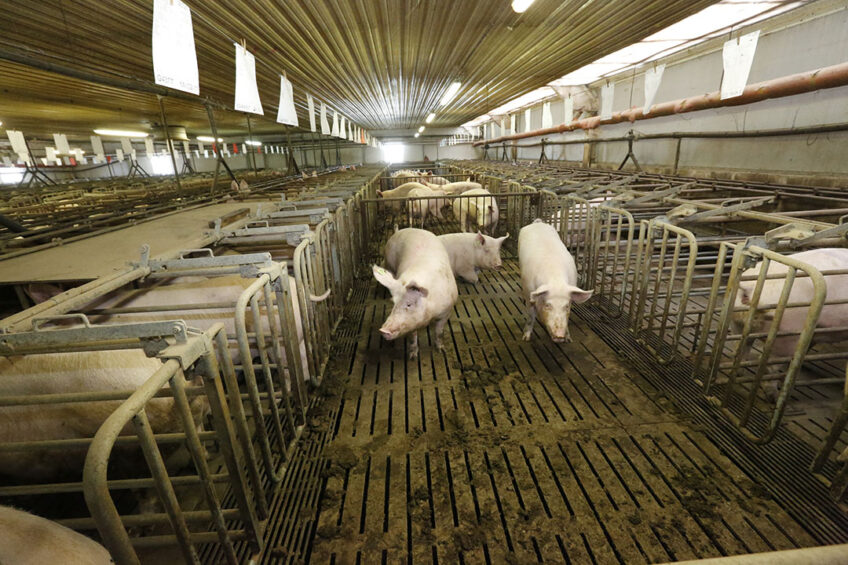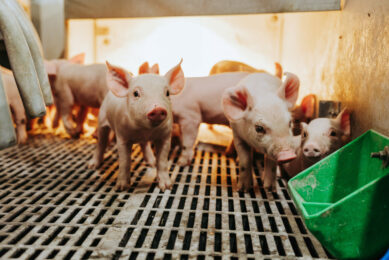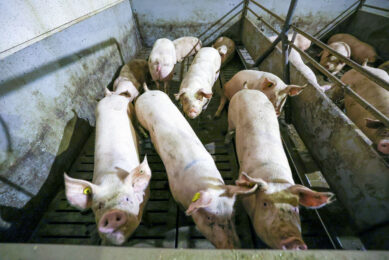Hungary has completed PRRS eradication: how did it go?

Porcine Reproductive and Respiratory Syndrome is a nagging disease that can substantially depress national pig performance figures. That is why the Hungarian authorities decided to embark on an ambitious plan in 2014: eradicating the virus from the country. Early in 2022 the programme was completed. How did it go?
PRRS in Hungary
As is well known, Porcine Reproductive and Respiratory Syndrome (PRRS) is a major infectious disease in swine, causing the highest economic damage worldwide. Extrapolating foreign data, a quick estimation demonstrates that PRRSv infections in Hungary, with about 4 million slaughter pigs and 170,000 breeding sows, could cost roughly 5 billion Hungarian forint (about € 14 to € 15 million) per year.

Facilitating growth of market opportunities
For that reason, in 2013, the Pig and Food Chain Safety Strategy of the Hungarian government highlighted the need to eradicate PRRS virus, acknowledging the major importance of pork production for the Hungarian agricultural economy. Following the successful implementation of the Aujeszky’s Disease eradication programme, it was thought that elimination of PRRS from every pig in Hungary would greatly facilitate the growth of market opportunities.
Legal background
The legal background of the eradication programme was set out in January 2014. The programme, with state involvement, was approved by the competent committee of the European Union. There are 19 counties and 1 additional unit, the capital Budapest in Hungary. These are grouped into 7 EU regions. The eradication had to be reached at a regional level. In each of those regional units, PRRS needed to be eradicated from the entire pig population within a specified period.
Materials and methods
In order to figure out where the virus was occurring, a clear definition was needed as to when a farm was considered infected. A national regulation stipulated that pigs that are infected with PRRS:
Show characteristic clinical signs or post-mortem lesions, and the presence of PRRSv is confirmed by virological examination;
Have detectable PRRSv or its genome;
Show signs of the disease, and are kept in breeding or fattening pig herds. The district authority has established the presence of the disease in these herds;
Have been seropositive as confirmed by 2 different types of serological tests from the same sample.
3 types of farms
In the first phase of the plan, the surveillance phase, 3 types of pig farms were identified, each receiving their own regime as to how the eradication should take place.
Backyard farms
The authority ordered depopulation of the herds, with state compensation, but without the need for repopulation.
Large-scale fattening units
At this early stage of the eradication plan, after sending the pigs to slaughter, premises had to be carefully cleaned and disinfected. Only PRRS-free animals were allowed to be repopulated.
Large-scale breeding swine herds
Managers of large-scale breeding swine herds had complete freedom to decide whether they carried out the eradication of PRRSv by complete depopulation-repopulation; herd closure, or test and removal. They could also apple more stringent site management methods; rationalisation of infection chain interruption; or the introduction of systematic laboratory testing processes. The criterion was to find an optimal method suited to the particular technological processes of the swine herd. It had to lead to a PRRSv-free status with high probability within a certain time period defined by a competent authority.
In principle, breeding stocks could be immunised without any time limit. Laboratory methods (ELISA, PCR) in any age group had to prove the progeny was free from PRRSv. Vaccination during the fattening process (including lactation, nursery, fattening) was not allowed in those farms. Therefore, the tests were not allowed to show seropositivity in the progeny. All animals had to be free from PRRSv, even the vaccine virus.
Eradication phase
The second stage, the eradication phase of the process began in November 2017. The decision banned the introduction of non-PRRS-free fattening herds to Hungary. Only PRRS-free nursery pigs could be used for fattening. In practice, that meant that:
Only pigs from PRRS-free farms could be used for fattening in Hungary;
If any diagnostic test after 48 hours of arrival or 60 days of quarantine gave a positive result, the producer had to carry out a second test. If the result was still positive, the producer had to sell the stock for slaughter within 15 days or place it outside Hungary;
From 2019, the PRRS-free status of the herd of origin had to be certified by a local official veterinary authority.
Results
Backyard farms
During the surveillance phase, between 2012 and 2013, backyard settlements in Hungary kept pigs in nearly 60% of the cases. Of the examined backyards, surveillance teams found PRRS-seropositive individuals in nearly 4% in both years. Following the eradication decree seropositive animals were culled. This meant that on 31 December 2015, the PRRS-free status of small-scale Hungarian swine herds was a fact. PRRS monitoring programmes in each following year at small-scale swine operations conformed that free status.
No samples originating from breeding sows tested PCR positive. The PRRSv PCR positivity was observed in small-scale herds when irregular animal transport without veterinary certification was carried out or when infected nursery pigs stood in small units for fattening purposes.
Large-scale breeding farms
Of the 470 large-scale breeding farms in Hungary, 345 were classified as PRRSv-free (73%). 125 (27%) were classified as PRRSv-infected at the beginning of 2014. The total number of sows in those 470 farms was 186,404. 68,226 (37%) sows were in infected farms.
The average number of sows in the herds was 396; the average sow number in non-infected and infected farms was 343 and 546, respectively. With the exception of 20 farms, all were of the farrow-to-finish type. During the eradication process, 40 large-scale breeding farms that were initially free from PRRSv became infected. So, all together, 165 large-scale breeding farms had to create their own eradication plans. Of these, 94 eradicated the virus by the depopulation-repopulation method (with 69,111 sows). 6 farms reached the Vaccinated Free (VF) status. Others, that were seronegative during certification, turned to producing fatteners or left the swine business altogether (see Table 1).
Based on the similarity network analysis, the team was able to determine the reason of the infection of the above-mentioned 40 large-scale pig farms. About 40% of them became infected by PRRSv through imported nursery pigs. In almost 50% of cases, the cause was vehicle transport (see Table 2).
In February 2022, the eradication committee declared that 99% of large-scale breeding farms were free from PRRSv.
Large-scale fattening farms
In 2015, 188 (61.2%) out of 307 large-scale fattening farms registered by the Hungarian veterinary authorities kept PRRS-positive animals. Of the total number of fattening places on these farms, 63.9% were PRRS-positive. At national level, there was no significant difference in the number of infected and infection-free stocks per holding. In 2013, 46% of pigs coming to Hungary as fatteners originated from the Netherlands. 39% came from Germany and 12% from Slovakia. The rest arrived from Denmark, Austria, the Czech Republic and Slovenia.
In 2016, the Netherlands accounted for 46%, Germany for 33%, Denmark for 10% and Slovakia for 6% of imports of fatteners to Hungary. PRRS eradication and the new rules regarding importation for large-scale fattening units induced major changes for countries exporting pigs to Hungary: pigs imported from the Netherlands decreased significantly and at the same time from Denmark, Czech Republic and Slovakia increased.
Current state of PRRS eradication in fatteners
At the end of 2021, every large-scale fattening swine unit in Hungary was PRRSv-free. The eradication committee feels that the biggest threat to Hungarian swine units maintaining their PRRSv-free status is insufficient import checks of nursery pigs. The committee believes in the effectiveness of the rules implemented from 2017, even tightened ones, when Hungary requested an official certificate of the herd of origin of nursery pigs confirming its PRRS-free status.
Costs of eradicating PRRS in Hungary
Last but not least: what did this whole operation cost? Between 2014 and 2022, about 600 to 800 million Hungarian forint (€ 1.7 to € 2.2 million) per year was available for compensation. The state calculated the total investment at € 7 billion Hungarian forint (€ 20 million). It spent significant amounts on depopulation-repopulation. The programme needed a total of 80,000 to 100,000 lab tests, both for small-scale and large-scale swine herds.
External biosecurity status went up
Apart from eradicating PRRSv, in general the external biosecurity status of the farms has gone up significantly during the programme. This development will also have a positive effect on the reduction of antibiotics usage. There has been no research into that effect yet.











